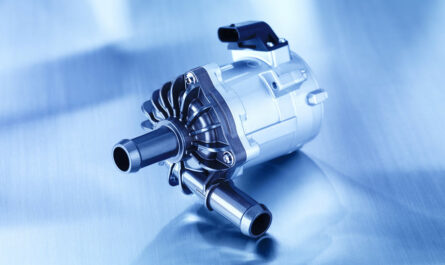Agricultural tractors have become indispensable for farming across the world. What was once a humble machine that facilitated the arduous tasks of ploughing and cultivation is now a highly advanced piece of farm equipment that takes agricultural productivity and efficiency to new heights.
The Evolution of the Agricultural Tractor
The first tractors used for agriculture dates back to the late 19th century. Early steam-powered tractors were bulky and inefficient. It was in the early 20th century that gasoline-powered tractors started gaining traction among farmers. Brands like Fordson, John Deere and International Harvester introduced basic tractor models that offered better mobility and power compared to horse-drawn equipments. Through the 1930s-40s, tractor designs evolved with features like multi-speed transmissions, steel wheels and better power-transfer systems to the equipment.
The post-World War 2 era saw significant advances in tractor technology. Powerful diesel engines replaced gasoline ones for higher torque and fuel efficiency. Hydraulic systems were introduced for controlling implements. By the 1960s, tractors featured new cabs, multi-stage transmissions and innovations like 3-point hitches for standardized implement attachment. Modern computer-controlled features further enhanced functionality. Today’s agricultural tractors are complex machines packing cutting-edge technologies.
Features of a Modern Agricultural Tractor
A modern farm tractor essentially consists of the following key components and advanced features:
– Powerful diesel engines: Ranging between 50HP to over 500HP, today’s tractor engines offer high reliability and increased fuel efficiency.
– Advanced transmissions: Multi-speed powershift, semipowershift or continuously variable transmissions precisely match engine power to varying implement loads.
– Hydraulic systems: Sophisticated hydraulics allow for raising/lowering and controlling implements precisely through joysticks. Remote hydraulics enable multi-functionality.
– Electronics and control systems: Advanced engine ECUs, GPS guided auto-steering, auto-implement height control and telematics keep tractors running efficiently. Display consoles provide real-time data feedback to the operator.
– Comfort cabins: Spacious, pressurized and sound-proofed cabs with air-conditioning and customizable seating improve operator comfort during long work days. Advanced cabs offer infotainment and connectivity.
– Standard 3-point hitches: Rock-solid, adjustable and controllable lift systems ensure smooth and secure attachment of ploughs, cultivators and other implements.
– Variable track widths: Options to alter wheelbases ensure compatibility with varying equipment and optimal maneuverability across terrains. Larger tires further boost traction and stability.
Impact of Tractors on the Face of Agriculture
The introduction of tractors revolutionized Agricultural Tractor around the world. By substituting manual labor-intensive tasks with mechanized operations, tractors increased agricultural productivity manifolds. Where it earlier required several farm workers and draft animals to plough just a few acres per day, a single tractor-operator unit could now plough dozens of acres easily. This allowed farmlands to be cultivated faster and more efficiently.
Higher crop yields due to time-sensitive tasks like timely ploughing and sowing ensured food security. Tractors enabled expansion to rougher terrains difficult to work manually. They reduced drudgery and attracted more youth to take up farming as a career. Agricultural mechanization led to rural development as farmers earned higher incomes which boosted local economies. Tractors facilitated cultivation of cash crops and commercial farming. Overall, agricultural tractors emerged as the backbone of modern, efficient and progressive farming practices globally.
The Future of Farm Tractors
Technological innovations will continue revolutionizing agricultural tractors. Precision farming techniques using automation, robotics, IoT, Artificial Intelligence and analytics will make tractor operations even smarter. Auto-steering with centimeter-level accuracy will minimize input wastage. Real-time field monitoring and implement control through mobile apps will optimize usage. Electric and alternative fuel-powered tractors will make farm operations greener. Advanced machineries will automate mundane tasks to further raise productivity while reducing operator fatigue. The future of farming indeed looks promising with new-age intelligent tractors set to revolutionize global agriculture.
In conclusion, agricultural tractors have come a long way from their early crude versions. As the engine driving productivity increases across farming communities, modern tractors integrating cutting-edge technologies promise to take agriculture to new heights. They will continue enhancing livelihoods and shaping rural development for decades to come.
Note:
1. Source: Coherent Market Insights, Public sources, Desk research
2. We have leveraged AI tools to mine information and compile it



